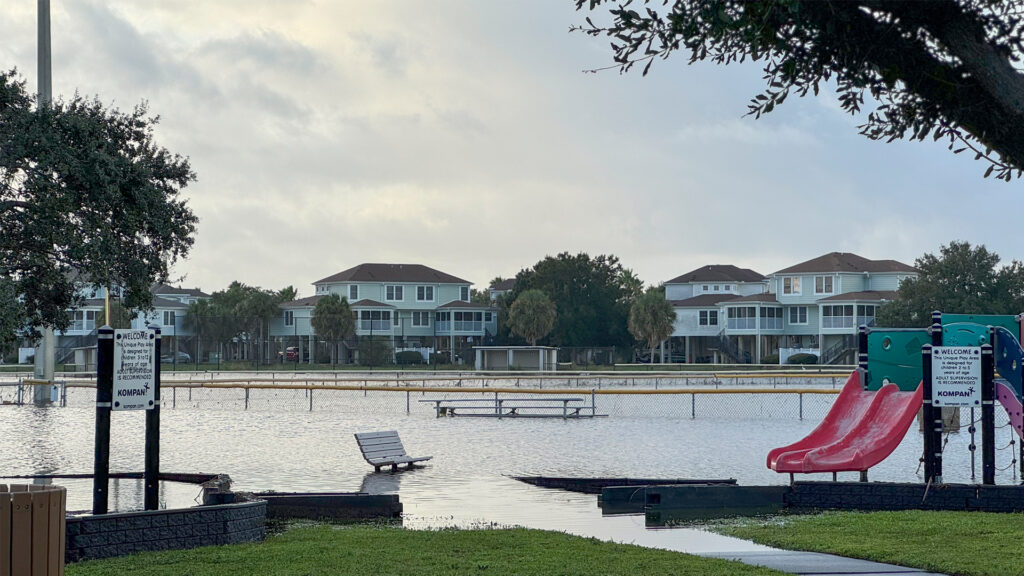By Jake Holehouse, HH Insurance
What a two weeks to be an insurance agent in the Tampa Bay area. We all know about hurricane risks, but when storms wallop our community twice in 13 days, it takes a mental toll. As agents, we also learn what worked and what didn’t within Florida insurance. I want to reflect on what we saw to help get us ready for the next storm.
Unfortunately, Hurricane Helene brought unprecedented flooding — and two types of insurance claims. The first was from insured property owners living in non-elevated homes, typically built before 1975. The Federal Emergency Management Agency initiated its flood maps for Pinellas County after 1975, so most structures built after 1975 should meet at least basic flood map requirements.

Many non-elevated homes experienced devastating flooding, often with 3 to 4 feet of water inside. The owners often lost their personal belongings, family memories and a place to live. These are tough claims because the National Flood Insurance Program’s maximum coverage to fix or rebuild a home is $250,000. In today’s inflationary environment, that doesn’t cover much. Additionally, the national flood program does not cover loss-of-use of the home, which would pay for owners to live elsewhere while their houses are being repaired. The shortfall places a huge financial burden on these families.
The second type of claim involved post-1975 construction, where homes typically feature a garage downstairs and living areas on the second and third floors. In these homes, we saw almost no substantial damage. The damage typically included swimming pools, landscaping and items inside the garage. While those things aren’t usually covered by flood insurance, the owners were often able to move back into their homes a few hours after the storm.
I believe Milton’s high winds showcased the importance of the Florida Building Code. From what we saw, homes with new roofs, hurricane-impact windows or shutters and clips that tie roofs to walls sustained little damage. Most of the damage consisted of downed trees in yards. The eye of the storm passed within a mile of my cousin’s relatively new house in Parrish in northern Manatee County. Two hours after the storm, you wouldn’t have known a hurricane had just hit his property, aside from a broken vinyl fence. On the other hand, Milton severely impacted the older, non-compliant construction, including tearing off roofs.
Milton also brought flooding to areas considered non-flood zones, sometimes 50 feet above sea level. The deluge reinforced the reality that every house is in a flood zone, and every homeowner should consider carrying flood insurance.
My takeaways as an agent, which may not be popular with everyone:

1. Flood elevation works — We need to find more common-sense solutions to encourage elevating homes. We must strictly enforce the 50% rule, which says that if repair costs meet or exceed 50% of a structure’s depreciated market value (not including land value), it’s considered “substantially damaged” and must be rebuilt to the newest codes, which often means elevating. We should not allow external appraisals to inflate home values and manipulate those rules. As painful as this may be for many, the resiliency that proper rebuilding provides is well worth it.
2. The Florida Building Code works — Bringing homes into code compliance limits the damage. We need to do more of it. “My Safe Florida Home,” which helps owners harden their homes against storms, is a great program that should be expanded.
3. Flood insurance — We should encourage more people with properties in flood zones B, C and X to purchase flood insurance. Lenders are not allowed to put non-mandatory flood insurance payments in an escrow account, which forces property owners to pay the full cost upfront, instead of spreading the payments over the whole year. More people would buy flood insurance if that requirement were changed.
I encourage our state and federal leaders to find more ways to strengthen our building codes and create programs that allow more homeowners to elevate their homes and add features like hurricane clips and shutters. Our leaders should strip away the red tape. These steps will help create a resilient and strong Florida.
Jake Holehouse is president of HH Insurance based in St. Petersburg. This opinion piece was originally published by the Tampa Bay Times, which is a media partner of The Invading Sea. Banner image: A Tampa street still flooded four days after Hurricane Milton. (Liz Roll/FEMA, via Defense Visual Information Distribution Service).
If you are interested in submitting an opinion piece to The Invading Sea, email Editor Nathan Crabbe at ncrabbe@fau.edu. Sign up for The Invading Sea newsletter by visiting here. To learn more about flood zones, watch the video below.




The question is HOW? How are you gonna elevate old block houses on slabs? Who is gonna pay for improvements when people who were devastated by the hurricane can barely survive?
Our house is from 1959 and was never flooded before Idalia and Helene. This year we had 3 ft of water outside. There’s no way to elevate the house or change something substantially. We would love to build the second floor and turn the bottom into a garage and workshop areas, but we can’t afford that, and the vast majority of people are in the same situation.
The flood insurance is unaffordable for majority of population at all. We have a regular home insurance, but it doesn’t pay for anything. The flood insurance prices are so crazy that we didn’t even look into buying one.
What happens to people who’s homes fall under 50/50 rule? Are you okay with them just becoming homeless? Most of them are low income. My 72 year old friend lost her house in Helene flooding and is basically homeless now.
Until the requirements are brought in touch with the actual reality of what the population can do or afford to purchase, it’s gonna be just a nice talk. And the state has done nothing except talking as well.
I have flood insurance and have experienced severe structural damage that may put me over the 50/50 rule. I don’t know how I will be able to afford to live and pay for two household mortgages, utilities, etc while demolition, site prep, elevation and the building process is complete. In addition, I have a separate apartment, in the property, that I rent out as income and that would be an additional cost. My last insurance company did not even reply to my claim and cancelled my policy thereafter. They sent a letter of cancellation 30 DAYS ADTER THEY CANCELLED… The entire insurance problem, in Florida, makes it unaffordable to protect your home and even when you have insurance the companies avionics paying claims. The average citizen has no clue what they can or should do and lenders only care about covering the debt of the borrower.
I think that is homeowner should know that if they purchase insurance, it will cover the repairs or replacement.
I still do not have power and water or sewer and the insurance adjuster hasn’t been to inspect since October 12 claim filing. FEMA is waiting for information from the flood insurance and most citizens do not have the time to learn the system of disaster assistance or to wait around for pending decisions and denials…. I like the idea of escrowed flood insurance. I believe the rates are lower for flood zones that are less likely to flood and it would spread the risks out and keep the program better funded. Thank for your report. I hope that we start to see some relief for our aging homes and population…